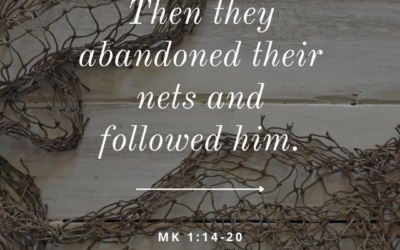Now that it’s the holidays, nonprofits are ramping up their solicitations for gifts. December is often when people are most generous—25% of philanthropic dollars are donated this month! Be proactive in inviting your community members to remember your church in their holiday and year-end donations. Read on to learn why so much money comes at the end of the year and how to structure your year-end appeal.
Why end of the year?
The three highest giving months for churches are January, May and December, and yes, tax season plays a factor in each. May sneaks in right before the classic summer giving slump, but it also shows up after most of us have filed our taxes the month before. In knowing what we’re getting back or owe on the year, we’re often able to turn our attention to the needs of others. In recent years, we’ve seen an increase people waiting to give until January, as they want the tax benefits the following tax year, rather than in the one that’s just ended.
Regardless of whether your congregation’s gifts come at the end of one year or the start of another, one thing is clear: December is the month people are in the mindset to give. However, the #1 reason non-profits (including churches) don’t receive is because they don’t ask. Lots of organizations are competing for access to your church member’s wallet. You need to be proactive. Invite folks to give to the church in order to avoid being forgotten!
To get on the nice list, we recommend you send out an end-of-year ask letter to your congregation. As 25% of charitable donations are made in the month of December, and January is also a top giving month, an end-of–year ask letter is key to engaging consistent and irregular attendees of your church. This is especially important for your top 12 donors who are concerned with the tax incentives of charitable donations.
With this in mind, let’s talk about how to effectively set up your ask letter so people actually read it.
Structuring Your Letter
We often don’t read what’s right in front of our faces. In skimming a letter, here’s what our eyes look for before we decide if we’re going to read the whole thing. In order:
1. One-Page Wonder
I know, you’ve got so much you need to say, but we live in the TL;DR world ( that’s “too long; didn’t read” for anyone who hasn’t tried to say too much on the internet). This means that if the letter looks long, sometimes people will save it until later… only sometimes later never comes. While you should also talk about your end-of-year ask on Sunday morning, via email, etc., we often have to communicate six different ways in the hopes that people hear us once.
Narrow 1/2” margins are okay, but keep it on one page, header and all. This is the first step to get eyes scanning over the rest of your letter.
2. Dear Me
You don’t have to be a master at Excel, but learn how to mail merge your church mailing list. This way, no one receives a letter to the great impersonal “friend of the church” or the ever pleasant “Dear member” greeting. Remember, this is a list of things that happen before people start really reading your letter. During this quick scanning phase, there isn’t necessarily a lot of conscious thought, but there is a lot of processing going on, so if the letter isn’t directed specifically to me (and where applicable, my significant other), I’m less interested. Start off each letter addressed to the first name of the recipient(s).
3. Blue Ink Signature
Once you see your name at the start of a letter, your eyes will drift down to the bottom to see if it’s from a person. Again, this is a subconscious move. What works? A blue ink electronic signature. Sure, black is easier to copy, and it’s not as if your pastor or stewardship staff is signing each one (regardless of the signature color), but trust me, blue signatures work better than black.
Change the signature color in Word, MS Paint or Photoshop if need be, but make it blue. Make sure your signer uses a bright white sheet of paper, too. It’s hard to adjust that background after the fact.
4. A Bolded Summary: P.S. Statement
Yup, the last line of your letter often gets read before the first. This means that you’ll want to summarize the content of your letter here, Try something like this:
P.S. Thank you for considering financially supporting (church name). You can return your gift via the enclosed envelope or by placing it in the offering by [date—likely in January]. Every gracious gift of any amount helps us share the love of Jesus during the holidays and beyond.
If you check all these boxes, the next thing that will happen is people will read…
5. The first sentence.
The first paragraph requires a fair amount of creativity. It is not actually what people look at first, but now that you’ve structured your letter and you’ve passed the subconscious smell test, let’s focus on your hook. Use the fun side of your brain. You may think, I’m writing a financial letter, therefore I’ll start with a financial statement—but most people are not hooked by an opening paragraph on your church budget vs. what actually came in.
In order for people to engage, they normally connect with a story. People usually connect with stories in one of three key ways—through visual, auditory, or kinesthetic (touch) descriptions—so, if possible, you’ll want to include all three in your opening paragraph. As this letter is going out during the holiday season, talk about taking your family out to cut down the tree, or talk about memories of Christmas growing up, or talk of a crazy uncle. Well, maybe not him. Not in the church letter.
Whatever you do, share a story, not statistics—at least not in the first paragraph. You’ve got the rest of the letter to touch on that.
If you’re the pastor, you’ve probably learned this technique already in starting your sermons. Bring this same hook to your writing. Make sure that first sentence makes your reader want to go on, then get into the details of why you’re asking for an end-of-year financial gift and what you’d like to pursue.
Checklist & Final Thoughts
Letter Structure:
- Keep it to one page
- Use a mail merge to personalize your letters
- Use a blue ink signature
- Include a bolded P.S. summary statement
- Share a story to engage people with your first sentence / paragraph
- Talk about the end-of-year gift several times in church and communicate the message via email, etc.
In addition:
- Send the ask letter to arrive just after Christmas, but leave the response date open a little longer to allow people to give in January (if they want the tax benefits the following year)
- Make sure people can give online
- Have givers designate these gifts—on their check / online—as being for the “end-of-year gift”
- In your letter, share some of the highlights of the past year, what their giving has helped do already, and then how it will bless people in the future
- Ask people to “make a Christmas gift”
For a sample template of what to say in your end of year letter download our sample year-end letter.







0 Comments